Your basket is currently empty!

Im Färbergarten: Färberkamille
Dyer's chamomile, Anthemis tinctoria (also Cota tinctoria)
Dyer's chamomile belongs to the Asteraceae family, is native to our region, insect-friendly and is a permanent fixture in my dyer's garden.
The main flowering period is from summer to late summer, but the plants bear individual flowers until very late fall in my garden.
They are considered insect-friendly. The flowers provide nectar for numerous insects - and some wild bees even specialize in the pollen. In September 2022, the dyer's chamomile was the Deutschen Wildtierstiftung (German Wildlife Foundation). Through them I learnt that dyer's chamomile is even a food plant for caterpillars - I haven't seen this in the garden yet, but I'll keep my eyes open!

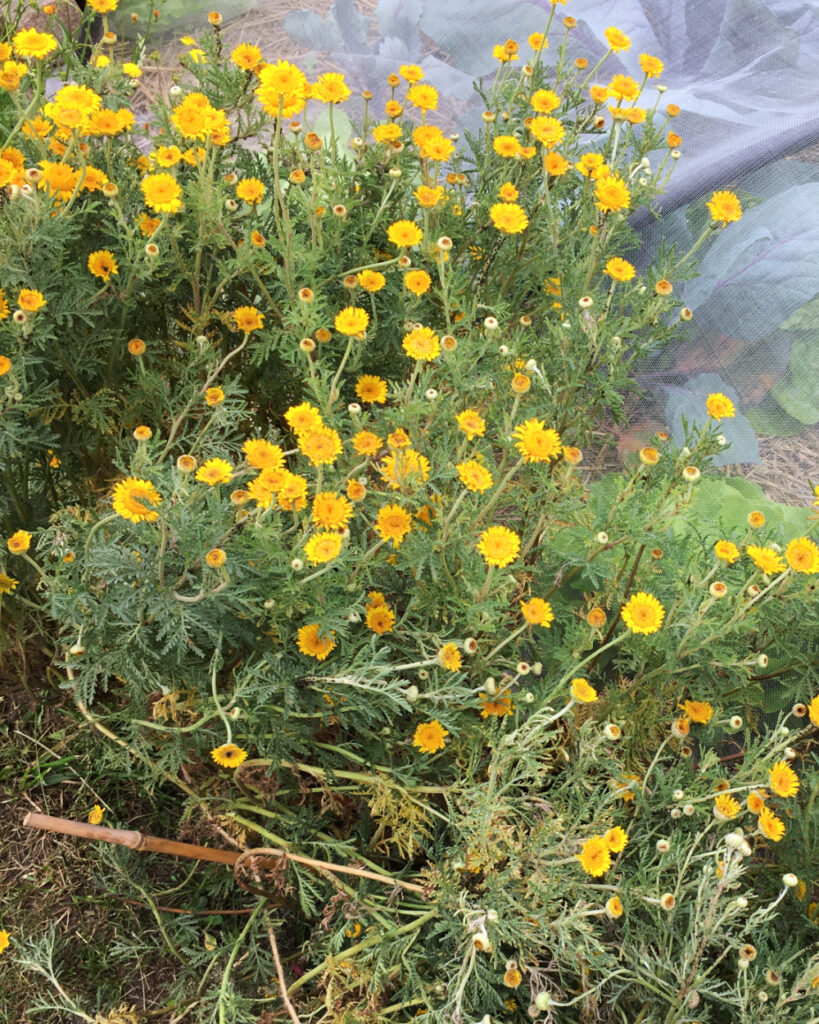
Now you may be wondering, should you harvest the flowers at all if they feed so many insects? I only harvest the flowers when they are about to wither. I usually use this time to prune the plants in order to rejuvenate them. If you have a large garden, you can of course also dedicate a part of it to insects, which is not being harvested from at all!
So, why the pruning? Dyer's chamomile is a perennial* - but also somewhat unpredictable. I usually see the most flowers in the second year, some plants die after that - others remain happy in the same place for several years. Pruning is recommended to stimulate vigorous new growth.
*More precisely, a 'short-lived hemicryptophyte', as I read during my research (and thus got to learn a new word...)! Hemicryptophyte means that the overwintering buds of dyer's chamomile are just above the soil surface, where they are protected by foliage or snow in winter. And although it is perennial, it is not a permanent plant.
Sowing dyer's chamomile
The plant can also easily self-seed and then appears in the garden in places that suit it particularly well... Of course, you always have to leave flowers to mature.
The seeds (in the dye plant seed set or individually) are very small, by the way, and belong to the light germinators. I therefore always pre-germinate them at home first. That way I can make sure that the soil stays nice and moist at the beginning. Immediately after germination, I now put the plants in a protected cold frame in the allotment. They don't mind the occasional cold weather and I have more space at home for other plants.
Seeds can be sown in spring or fall. The young plants can usually survive frosts and then continue to grow as soon as the sun and temperatures allow!
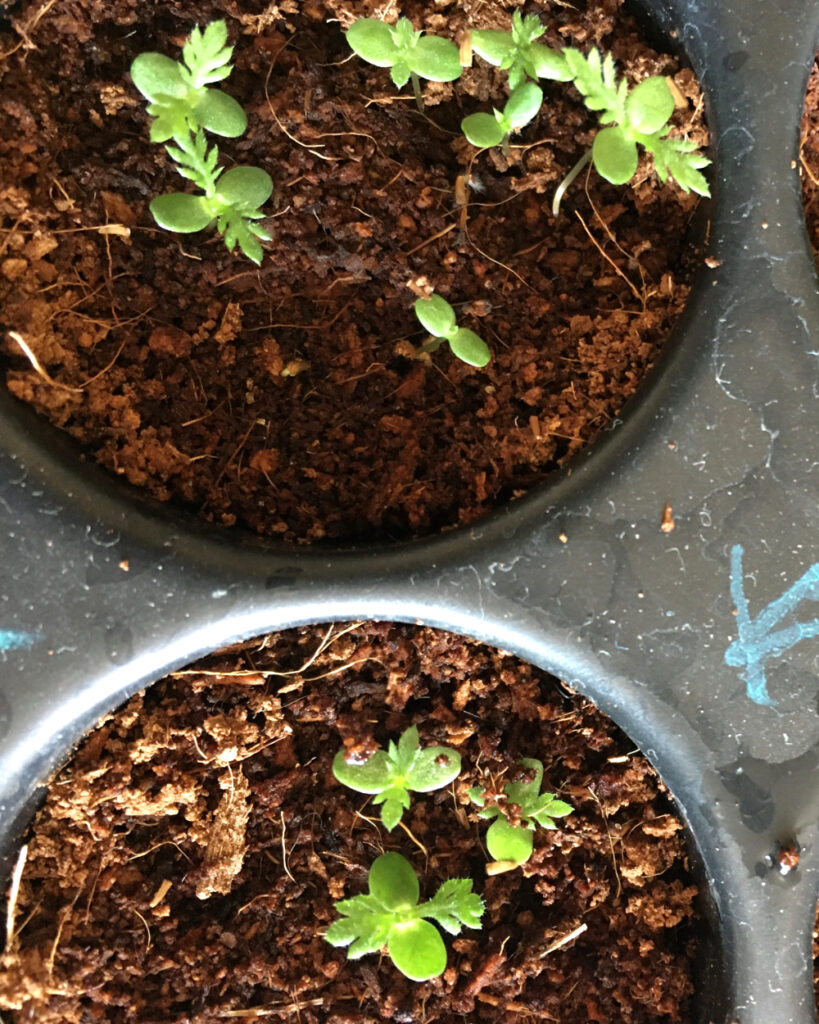
Dyeing with dyer's chamomile
The flowers (and the herb) dye a beautiful warm yellow (with aluminum stains) and can be nuanced with iron to dark tones. For purer shades, it is best to use only the flowers. However, the lightfastness is not as good as that of weld.
Besonders schön ist die Pflanze auch für Bundle Dye und Eco Prints – dafür kann man die Blüten sowie die Blätter nehmen.
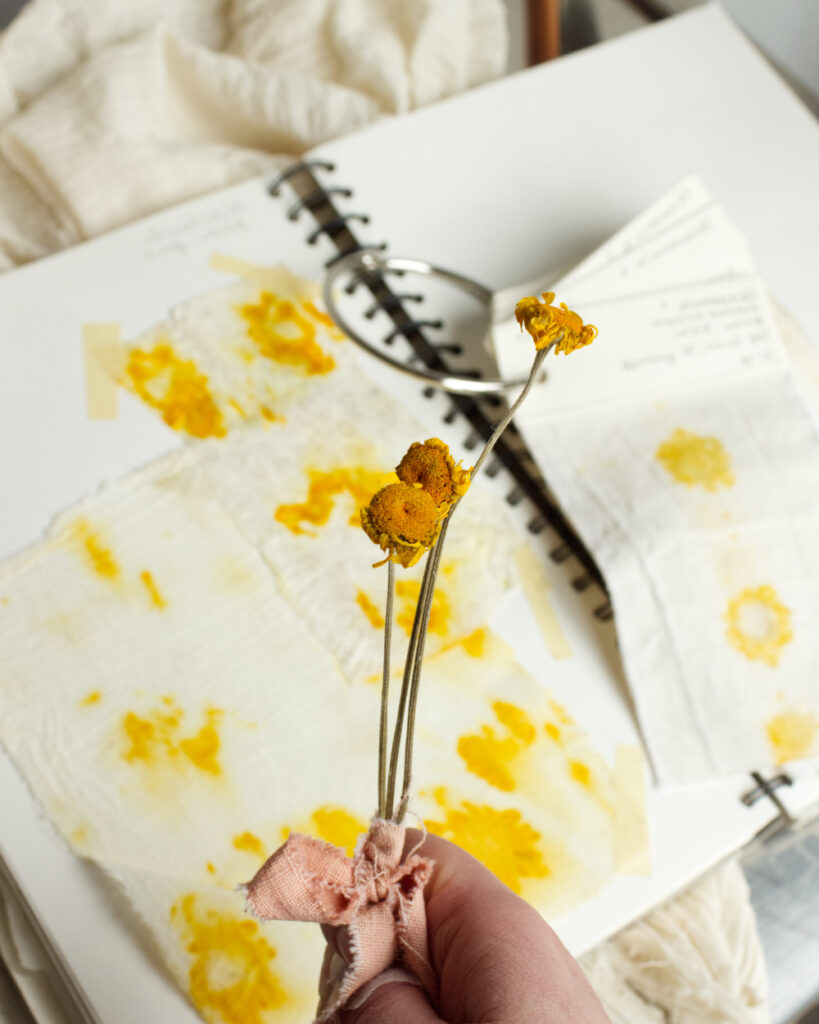
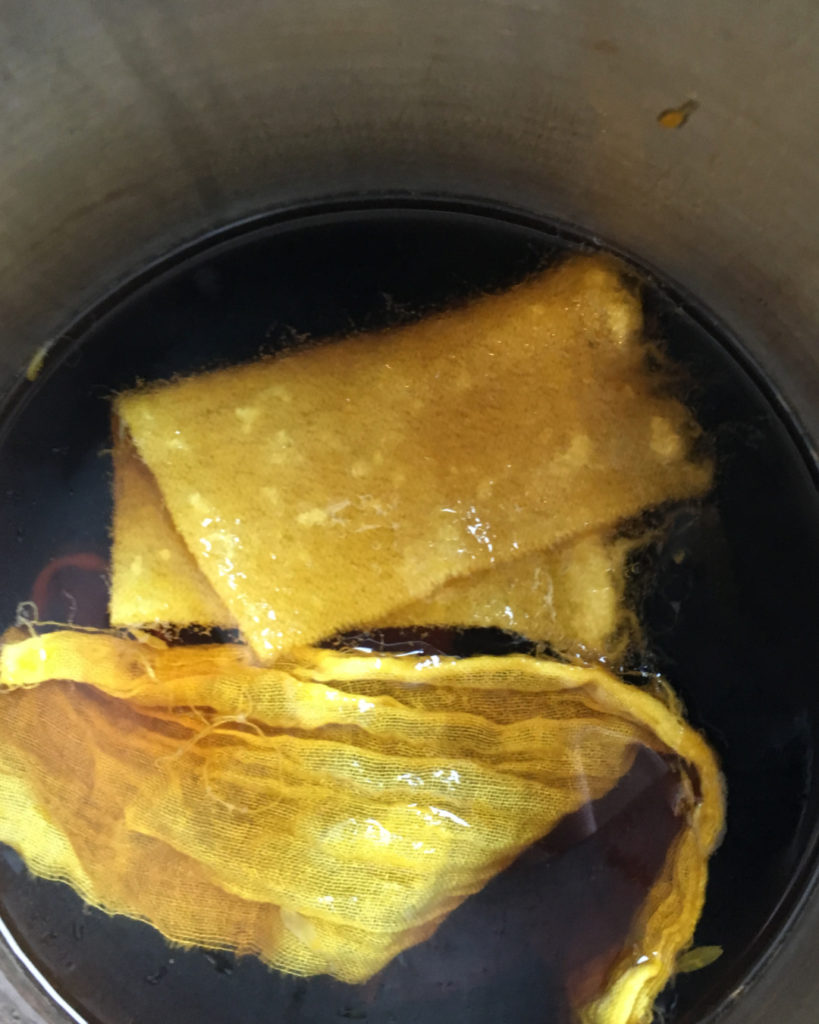
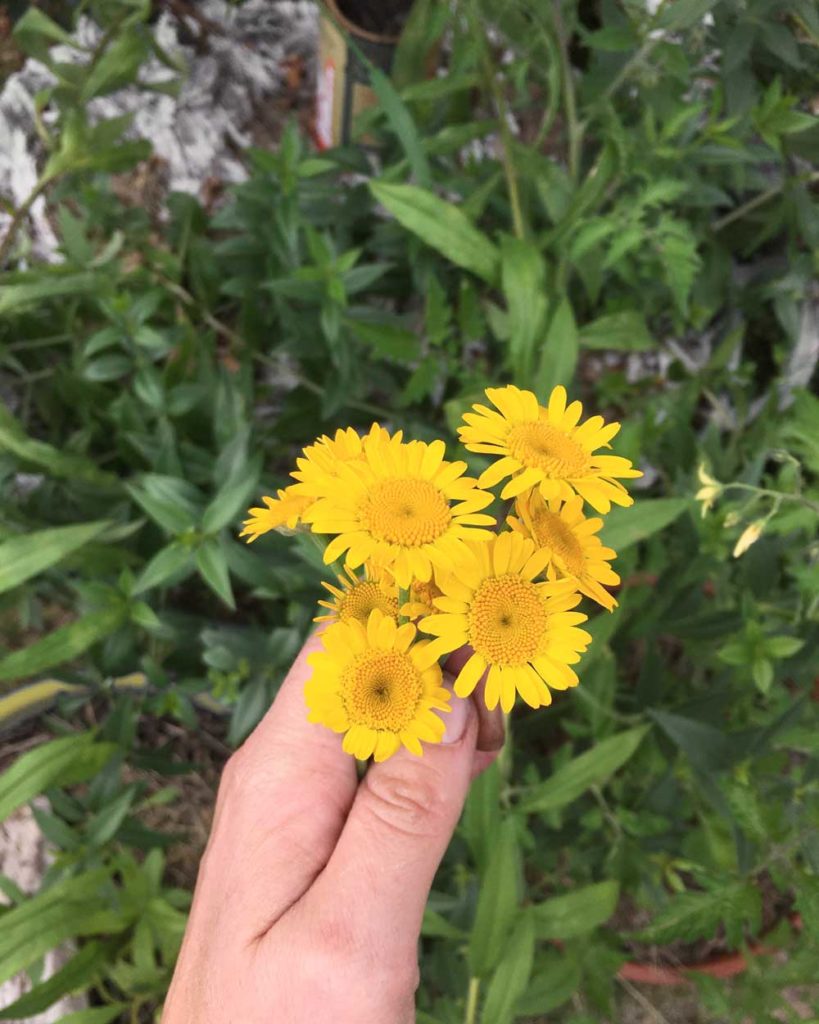
Other uses
Incidentally, the flowers are also edible - as are the leaves, as long as they are still young and rather soft.
Apart from the fact that they are a valuable insect plant and are a great fit for natural gardens!




Leave a Reply